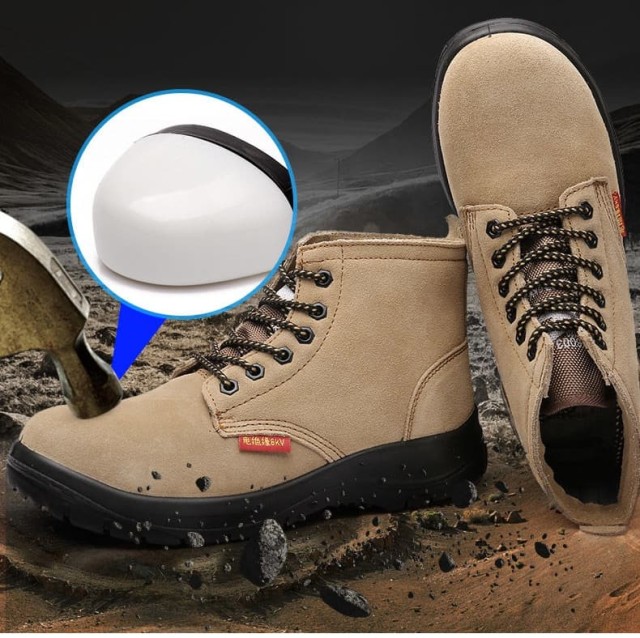Construction sites present some of the most demanding hazards for workers—from falling objects to electrical risks. The right safety boots don’t just comply with regulations; they actively mitigate these dangers through engineered materials and rigorous testing. Here’s how modern footwear balances protection, durability, and comfort for different job scenarios.
Safety Standards and Certifications in Construction Footwear
ASTM F2413 vs. ISO 20345: Decoding Compliance Requirements
Safety certifications aren’t bureaucratic red tape—they’re evidence of proven protection. The ASTM F2413 (U.S. standard) and ISO 20345 (global benchmark) ensure boots withstand:
- Impact resistance: Toe caps must protect against objects weighing over 20 pounds dropped from heights.
- Puncture resistance: Sole materials must stop sharp objects like nails (ASTM requires resistance to 270 lbs of force).
- Electrical hazard insulation: ASTM-certified boots fully insulate against shocks up to 18,000 volts.
While both standards overlap, ISO 20345 includes additional tests for slip resistance and energy absorption.
Industry-Specific Testing for Puncture Resistance and Impact Protection
Boots for roofing crews prioritize flexibility and grip, while those for heavy machinery operators emphasize toe protection. For example:
- Foundations/steelwork: ASTM’s MH-rated (metatarsal guard) boots shield the upper foot from crushing.
- Demolition sites: Outsoles with deep treads and oil resistance (ISO 20345’s SRA/SRB ratings) prevent slips.
Key Features for Hazard-Specific Protection
Composite vs. Steel Toe Caps: Weight, Conductivity, and Protection Trade-offs
| Feature | Steel Toe | Composite Toe |
|---|---|---|
| Weight | Heavier (~30% more) | Lighter, reduces fatigue |
| Conductivity | Conducts electricity | Non-conductive |
| Temperature | Transfers heat/cold | Insulates better |
Best for electricians: Composite toes (carbon fiber/Kevlar) avoid conductivity risks. Best for foundries: Steel toes handle extreme heat but require thermal liners.
Advanced Sole Materials: Vibram® vs. TPU for Uneven Terrain Grip
- Vibram® soles: Superior grip on wet/oily surfaces, with flexibility for ladder climbing.
- Thermoplastic polyurethane (TPU): More rigid, ideal for rocky terrain but less comfortable for long shifts.
Selecting Boots for Workplace Scenarios
High-Risk Environments: Roofing vs. Foundation Work Priorities
- Roofing: Lightweight boots with flexible midsoles and slip-resistant treads (e.g., Vibram® Megagrip).
- Foundation work: Waterproof TPU soles and metatarsal guards to withstand mud and heavy loads.
Waterproofing Technologies: Gore-Tex® vs. Traditional Rubber
- Gore-Tex®: Breathable yet waterproof, ideal for all-day wear in rainy climates.
- Full-grain rubber: More affordable but traps sweat; better for short-term wet conditions.
Maintenance and Longevity
Cleaning Protocols to Preserve Safety Features
- Daily: Brush off debris to prevent sole degradation.
- Weekly: Use mild soap (never harsh chemicals) to clean waterproof membranes.
- Monthly: Condition leather uppers to prevent cracks.
When to Replace Boots: Signs of Structural Degradation
- Visible wear: Cracked soles or separated layers compromise puncture resistance.
- Loss of traction: Worn treads increase slip risks.
- Toe cap exposure: Dents or deformities mean reduced impact protection.
Upgrade Your Safety Footwear with 3515
Whether you’re a distributor supplying high-risk industries or a brand owner seeking custom solutions, 3515’s expertise in safety-certified footwear ensures your workers are protected without sacrificing comfort. Explore our range today—because every step on the job site should be a secure one.
Related Products
- Wholesale Customizable Suede Safety Boots - Puncture-Proof with Velcro Closure
- Durable Mid-Cut Tactical Boots for Wholesale & Private Label
- Customizable Anti-Smash Safety Boots for Wholesale & Private Label Manufacturing
- Athletic Safety Shoes with Dial Closure & Steel Toe for Wholesale & Custom Manufacturing
- Wholesale Mesh Steel Toe Safety Shoes with Dial Closure Factory Production
Related Articles
- How to Choose Work Boots That Match Your Industry's Safety Needs
- How Safety Work Boots Engineer Protection: Features and Standards for Targeted Hazard Mitigation
- How to Choose Work Boot Materials for Maximum Safety and Durability
- How to Choose Work Boots That Balance Safety, Comfort, and Durability for Your Job
- How to Choose Work Boots That Match Your Job's Safety Demands



















